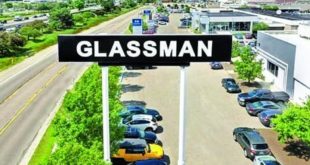Repossession activity slowed this spring as the coronavirus pandemic raged across the U.S., with several state governors declaring the practice nonessential in much of the country.
As repossessions resumed, however, auto lenders likely benefited from boosts in used-vehicle values. That’s because, aftermarket experts say, flipping cars for higher values this summer may have helped lenders write off fewer losses and reduced the remaining balance for customers with repossessed vehicles.
What started as one of the strongest selling seasons in years fell apart in a matter of weeks because of the pandemic. Auction lanes and dealerships closed on governors’ orders and car shoppers stayed home. In mid-April, used-vehicle values plunged by double digits. Emergency legislation and executive orders also paused vehicle repossessions in several states, which stayed in place for months.
Illinois, for example, resumed repossession activity Aug. 26. As of Oct. 5, the District of Columbia and Maryland still don’t allow repossessions.
As in-person auction activity resumed, however, repossessed vehicles sold there “fetched 20 to 25 percent greater value than [lenders] were anticipating,” said Kenneth Rojc, managing partner of the automotive finance group of Chicago-based Nisen & Elliott. Rojc’s firm works with several auto-lender clients in the Chicago area.
Reducing the end-of-term liability in the auction lane helps customers who still owe on a repossessed vehicle, and the lender that sold that car at auction is able to write off less of a loss, Rojc said.
The surge in used-car demand amid inventory constraints on both new and used vehicles bolstered values, giving lenders stronger returns on repossessed vehicles. Kevin Chartier, vice president of Manheim Consulting, said the average 3-year-old resale value for a used vehicle rebounded $ 3,700 toward the end of July from mid-April, when values hit their lowest point.
“That had to be an experience for the banks where they did not have anywhere near the losses they had planned for,” Chartier said.
Ford Credit saw positive auction performance this summer that benefited customers as well as the lender itself, spokeswoman Margaret Mellott said in an email.
“Our goal is always to help customers stay in their vehicles, and repossession is a last resort for us,” she said.
Details of Ford Credit’s auction performance will be reported during the third quarter, she added. Ford is expected to report earnings Oct. 28.
A spokeswoman for Ally Financial said the lender saw similar appreciation boosts at auction on repossessed-vehicle sales.
Other marketplace factors unique to the pandemic are impacting the types of vehicles coming into auction. Repossessed vehicles typically account for 12 to 16 percent of cars sold at auction annually, said Tom Kontos, chief economist at KAR Auction Services. Vehicles from dealerships make up about 50 percent.
As dealerships buy back as many off-lease and trade-in vehicles as possible, repossessions are making up a greater percentage of a lower volume of vehicles in the auction pipeline, he said.
“Dealers really hold on to as many of the trades that they can take at a time like this, when inventories are sort of lean at dealerships both on new cars and on used cars,” Kontos said.
The total volume of vehicles headed to Manheim auctions is down 22 percent from the previous year, the company said, though repossession levels remain consistent with prior years. Inventory sourced from dealerships, however, tanked at the onset of the pandemic, dipping to 39 percent from a high of 52 percent the previous year.
Though repossessions make up a larger portion of the vehicles coming through auctions, the number of repossessed cars in 2020 is lower than in previous recessions. Repossessions rose 50 percent year-over-year at the peak of the 2008 financial crisis, Chartier said, though the economy lacked the support provided this time by the Coronavirus Aid, Relief and Economic Security Act.
Stimulus measures, including the $ 600 boost in unemployment and $ 1,200 checks sent this spring, likely prevented a wave of repossessions that auction lanes typically see during a recession. Lender forbearance programs also prevented millions of auto loans from going into default. Ford Credit’s repossession rate dropped to 0.52 percent in the second quarter, down from 1.13 percent in the same period a year earlier, in part because of the government stimulus and the lender’s decision to temporarily suspend involuntary repossessions.
Though used-vehicle values are declining as the year progresses, demand likely will keep pricing above 2019 levels, said Jonathan Banks, vice president of vehicle valuations and analytics at J.D. Power.
“Even if repossessions increase, because lenders tend to use traditional auction channels to sell repossessed vehicles, it’s not going to push prices down,” Banks said. “I don’t think repossessions are going to cause big disruptions in the auction market.”


